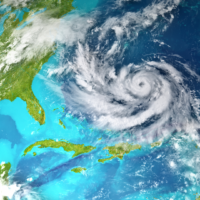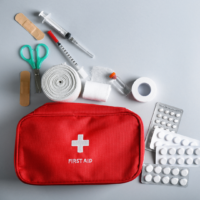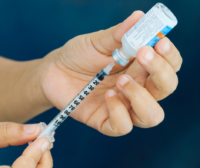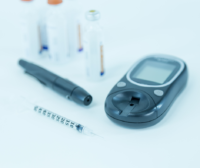Preparing For A Hurricane With T1D

 With hurricane season starting in June, the time to prepare is now – not when it starts to hit. Although you can’t stop a hurricane or tropical storm, you can plan ahead to make sure you and your family are safe. Everyone knows the typical essentials to pack if the need for evacuation arises, but it’s extremely important to have a plan in place if you or your loved one is living with T1D. Below you will find a guide with some essentials for those living with T1D and some helpful hints for preparing in case of emergency.
With hurricane season starting in June, the time to prepare is now – not when it starts to hit. Although you can’t stop a hurricane or tropical storm, you can plan ahead to make sure you and your family are safe. Everyone knows the typical essentials to pack if the need for evacuation arises, but it’s extremely important to have a plan in place if you or your loved one is living with T1D. Below you will find a guide with some essentials for those living with T1D and some helpful hints for preparing in case of emergency.
Pack Your Emergency Go Bag Ahead Of Time
The best way to make sure you have everything you need is to pack it all up before the storm hits. A backpack or small duffel bag will work just fine, but it would be good to consider a waterproof box in case of flooding – you can find a ton of options on Amazon. (If you go through Amazon, use smile.amazon.com, and select JDRF as your charity of choice. This selection prompts Amazon to donate a portion of any purchases you make back to JDRF at no additional cost to you!).
So What Do I Need?
 A good rule of thumb is to make sure you have at least two weeks’ worth of supplies in your go bag or box. General supplies to have on hand are prescription and-over-the-counter medicines, non-perishable foods (peanut butter, canned foods, crackers), a first aid kit, flashlights, blankets, and portable drinking water. However, there are certain supplies you need to make sure you or your loved one with T1D stay safe and healthy:
A good rule of thumb is to make sure you have at least two weeks’ worth of supplies in your go bag or box. General supplies to have on hand are prescription and-over-the-counter medicines, non-perishable foods (peanut butter, canned foods, crackers), a first aid kit, flashlights, blankets, and portable drinking water. However, there are certain supplies you need to make sure you or your loved one with T1D stay safe and healthy:
 Insulin – this may seem like a given, but it’s easy to leave behind with all the madness trying to get out the door. We recommend packing a cooler and some freezer packs to make sure it stays cold if the power goes out. Here are some helpful tips from the Diabetes Disaster Response Coalition on how to safely store your insulin.
Insulin – this may seem like a given, but it’s easy to leave behind with all the madness trying to get out the door. We recommend packing a cooler and some freezer packs to make sure it stays cold if the power goes out. Here are some helpful tips from the Diabetes Disaster Response Coalition on how to safely store your insulin.- Glucagon pens and tablets – sure, apple juices and candy work just fine, but in the event you or your loves one’s blood sugar drops low, these come in handy because they are the fastest and most effective remedy to hypoglycemia.
- Batteries – you never know how long you’ll be away for, so having extra batteries on hand for your insulin pump or CGM are a great idea to include to give you some peace of mind.
 Blood glucose monitor and insulin syringes – you or your loved one may be using a CGM or insulin pump, but it’s important to keep a backup in case something happens to them. Make sure you pack plenty of test strips and extra syringes to be on the safe side! Don’t forget the alcoholic wipes and lancets too.
Blood glucose monitor and insulin syringes – you or your loved one may be using a CGM or insulin pump, but it’s important to keep a backup in case something happens to them. Make sure you pack plenty of test strips and extra syringes to be on the safe side! Don’t forget the alcoholic wipes and lancets too.- Records – these are crucial in the event of evacuation. You need to have a printed copy of all prescriptions, health insurance card, emergency contact information (including your endocrinologist), medical identification, and a record of basal rates, insulin-to-carbohydrate ratios, and insulin sensitivity factor (a calculation of how much one unit of insulin lowers your blood glucose levels). These will work just fine if you have them on your phone, but it’s a good idea to print it out as well in case the power goes out and you are unable to charge your phone.
Most Importantly, Stay Safe!
A hurricane or tropical storm can be scary, but it should give you some relief to have a plan in place before it hits. With advanced warning of a storm, remember to fill your car up with gas, charge up your cell phones, secure your house and the rest of your property, and make sure your go bag or box is packed and ready for when you have to evacuate.
Throughout the storm and its aftermath, be sure to check in on your loved ones and offer support if needed – we are stronger together!
JDRF and other leading diabetes organizations have joined forces through the Diabetes Disaster Response Coalition (DDRC) to ensure that people with diabetes have the support, insulin, and supplies they need in advance of a major storm. For more information, visit www.jdrf.org/disasterrelief.